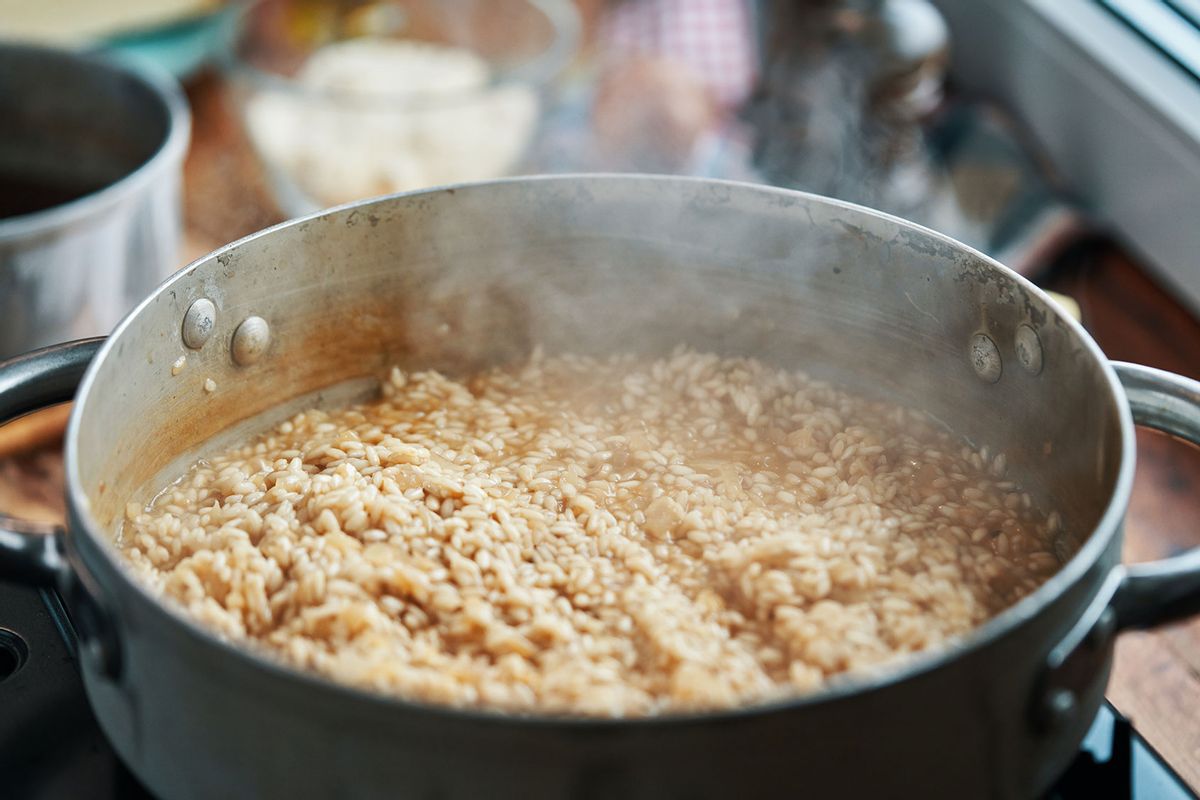Risotto has a reputation. It’s the dish that sends “Top Chef” contestants home. It’s the meal that seasoned chefs, decorated with Michelin stars, have fumbled under pressure. It’s also a dish that, when done well, feels like an accomplishment — one you can achieve in your own kitchen.
Back in 2023, I wrote a piece titled "Making risotto is so much easier than you think." I still stand by that claim, but I want to refine it. Risotto isn’t difficult in the way that, say, laminated pastry is difficult. But it’s not as simple as boiling water, either. It requires attention, patience and a willingness to stay present at the stove.
As I wrote then, “Making risotto at home shouldn’t be treated as such a gargantuan feat. Truthfully, in no more than 45 minutes — or as quickly as 18 — you can have restaurant-worthy, silky risotto with whatever mix-ins or toppings you choose.” That remains true. But to set you up for success, let’s acknowledge the reality: Risotto is an active dish. It demands preparation, precision and an understanding of its method.
That’s where home cooks often go wrong. Without proper mise en place — ingredients prepped, broth warmed, tools within reach — you risk a gummy, stodgy disappointment. Too much liquid too fast? Mush. Too little patience? Undercooked rice. And given the cost of quality ingredients, this isn’t a dish you want to leave to chance.
In my original piece, I warned against adding ice-cold stock, which can wreak havoc on texture, leaving you with a bowl of broken, unevenly cooked rice. The fix? Following the classic risotto technique: soffritto, tostare, sfumatura, brodo (cottura), and finally, mantecatura. These steps build the foundation of a properly cooked risotto—one that’s creamy, structured and deeply flavorful.
So, without further ado, here’s your step-by-step guide to risotto success. Follow it closely, and you’ll be rewarded with a dish that feels like a triumph—one that’s perfect for a cozy Valentine’s Day dinner, whether shared or savored solo.
One final note: Use Arborio or Carnaroli rice. Their starch content is what makes risotto work. Grab any old white rice from the pantry, and you’ll be setting yourself up for failure before you even begin.
We need your help to stay independent
Ingredients
3 to 3 1/2 cups stock or broth of your choosing
5 tablespoons unsalted butter, divided
1 fennel bulb, halved, cored and finely diced (about the size of the grain of rice), fronds reserved and chopped
1 onion, halved, peeled and finely diced (about the size of a grain of rice)
1 leek, cleaned, halved and finely diced (about the size of a grain of rice)
1 1/2 cups Carnaroli or Arborio rice
4 cloves garlic, peeled and minced
1/2 cup white wine or vermouth, optional
3/4 cup hazelnuts
1/2 cup grated Parmigiano Reggiano (ideally not pre-grated)
Chives, finely chopped
Directions
-
Preheat oven to 400 degrees F. Place two pots on the stove: One will be for the risotto itself, so opt for a large pot that can accommodate lots of vigorous whipping and stirring, and one to warm your stock, which can be in a smaller saucepan, if you’d like.
-
Begin warming the stock of your choice in the smaller pan.
-
In the larger pot, melt 2 tablespoons butter. Add fennel and cook for 3 to 4 minutes, until slightly tender.
-
Add onions and leek, season with salt and cook until translucent, without color, about 5 more minutes.
-
Add rice and toast for 2 to 3 minutes. The vegetables and rice can begin to take on a bit of color here, but you’re not looking for, like, caramelization: Keep it light.
-
Add garlic and toast for 30 seconds or until just fragrant.
-
Add wine, if using, and cook until almost completely reduced.
-
Begin adding stock, one ladleful to start — and not adding another ladle until the previous addition has been fully and completely absorbed by the rice. This is a process of slowly but surely cooking the rice via each ladleful — you’ll feel the difference as you stir, as the rice starts to give less and less resistance as each kernel begins to soften and plump as it cooks.
-
Repeat the process twice or thrice more, until you’ve used up nearly all of your stock. You want the rice to still have a subtle, slight bite, almost like an al dente noodle.
-
At this point, spread your hazelnuts out on a sheet pan and add to oven. Toast until fragrant, 7 to 8 minutes. Be careful not to burn! Let cool.
-
This is the fun part: You’re going to whip — and I mean whip — butter and Parmesan cheese into your risotto with gusto. Truly, put your elbow into it — exercise some frustration, get some exercise, whatever — you want to whip as much air into the dish while incorporating butter, Parm and lots and lots of flavor and body to your risotto.
-
Coarsely chop cooled hazelnuts and set aside.
-
Taste for seasoning: You shouldn't need much (or any) because of the salinity of the cheese.
-
When the rice kernels seem tender and you’ve added all of the cheese and butter, use a ladle to serve risotto in a large bowl or plate. As Tom Colicchio has stated on “Top Chef” numerous times, risotto should expand and fill the plate or bowl and should have a loose, flowing viscosity — it should not be stodgy and stay in one place after you plate it.
-
Garnish with chopped hazelnuts, a smattering of minced chives and some of the chopped fennel fronds.
-
Eat immediately and feel immense pride in your kitchen prowess (but you probably won't need that directive once you smell the finished risotto).



Shares